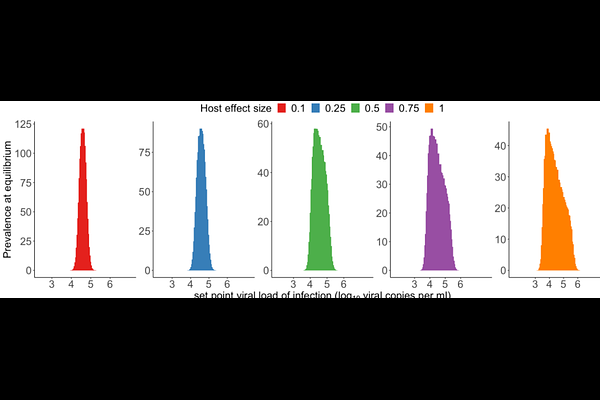Attenuation of HIV severity by slightly deleterious mutations can explain the long-term trajectory of virulence evolution.

Attenuation of HIV severity by slightly deleterious mutations can explain the long-term trajectory of virulence evolution.
Longley, H.; Fraser, C.; Wymant, C.; Lythgoe, K.
AbstractHIV-1 is a well-studied example of a pathogen that has evolved an intermediate level of virulence that maximises transmission. For a trait to evolve it must be heritable, and although viral load--a proxy for disease severity--has been shown to be a heritable trait, it is surprising that specific heritable viral factors remain mostly elusive. Rapid within-host evolution is also expected to diminish heritability. We hypothesised that rather than a small number of mutations of large effect determining viral load, the number of slightly deleterious mutations could be key. As a proof of principle, we explored how viral load is expected to evolve within and between hosts using a nested modelling approach that links within-host evolution with epidemiological outcomes. For mutations of sufficiently small effect, a mutation-selection balance is gradually reached during infection, resulting in slow changes in viral load despite rapid rates of genomic evolution. In simulated epidemics, we generated realistic population distributions of viral loads and estimates of heritability. The existence of many slightly deleterious mutations provides a mechanism that can help to explain why viral loads change slowly during infection, broad distributions of viral loads among individuals, and why searches for viral factors that determine viral load have had limited success.